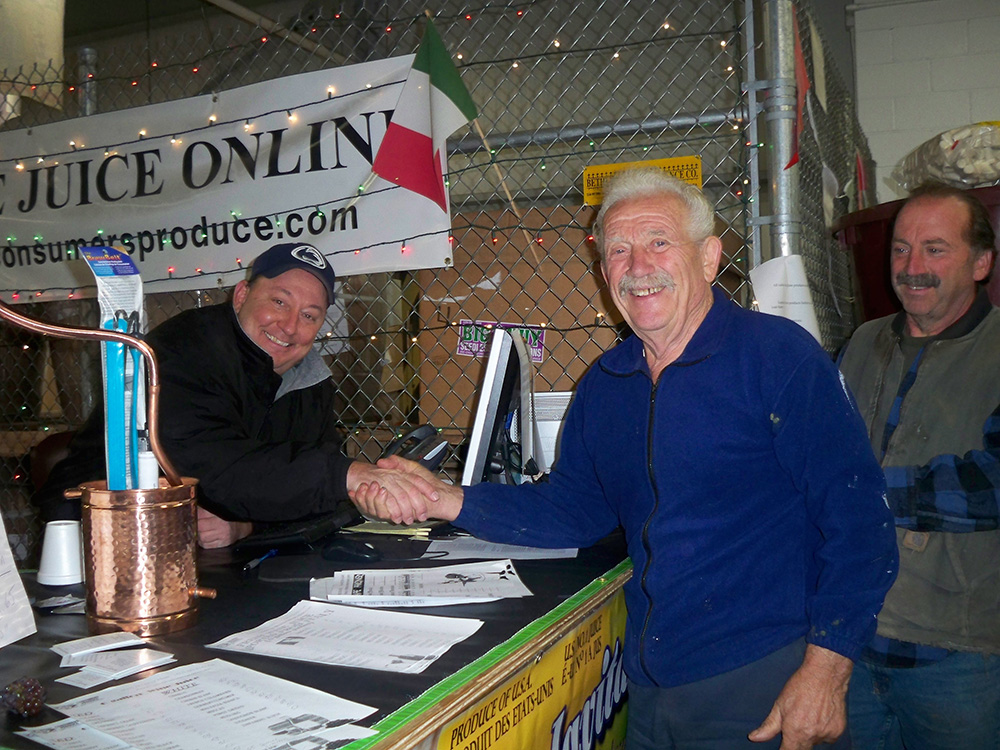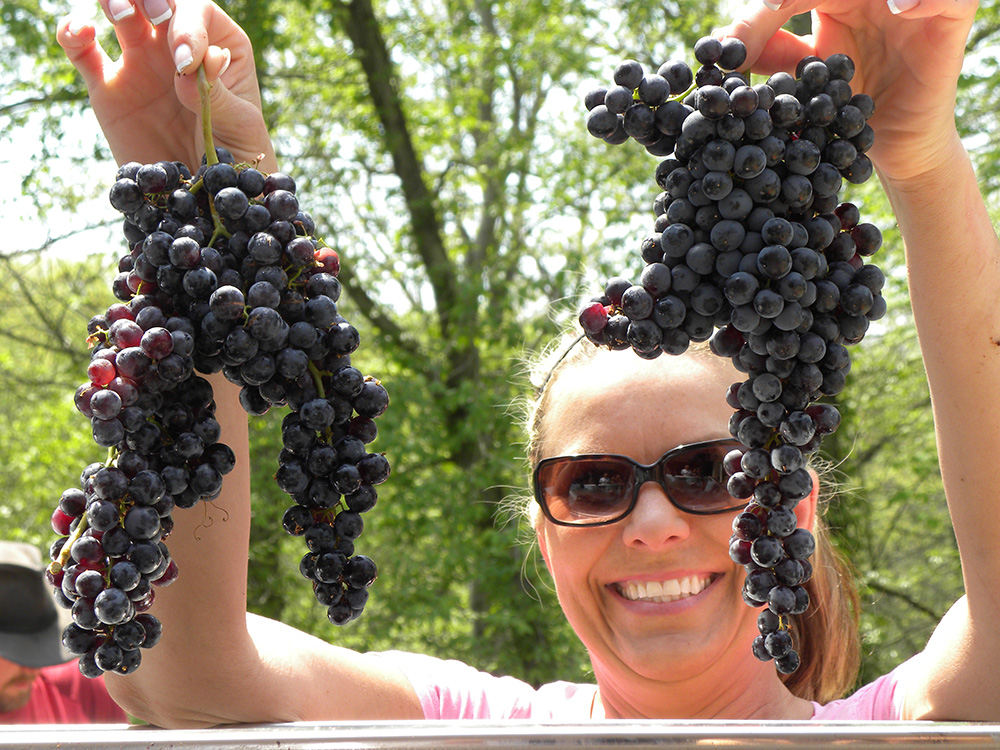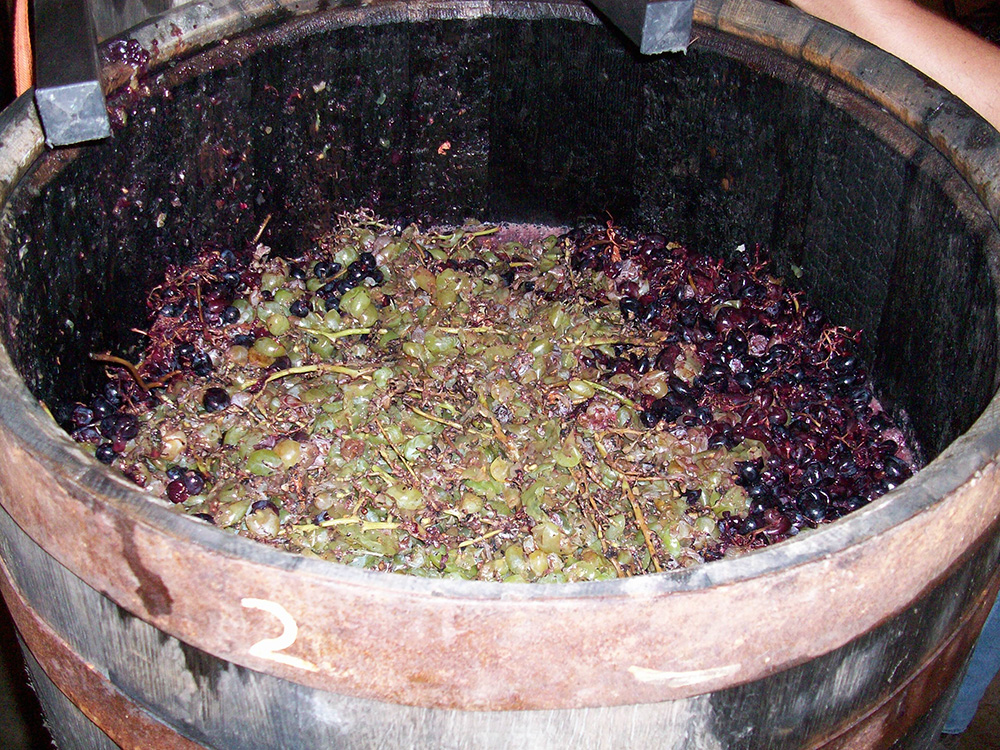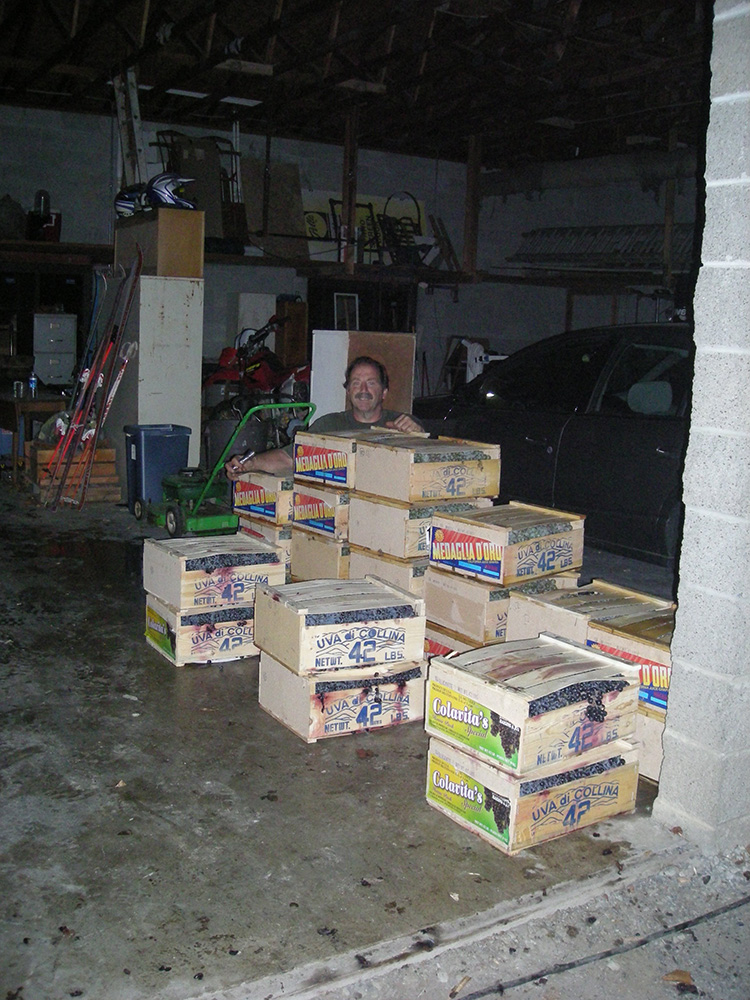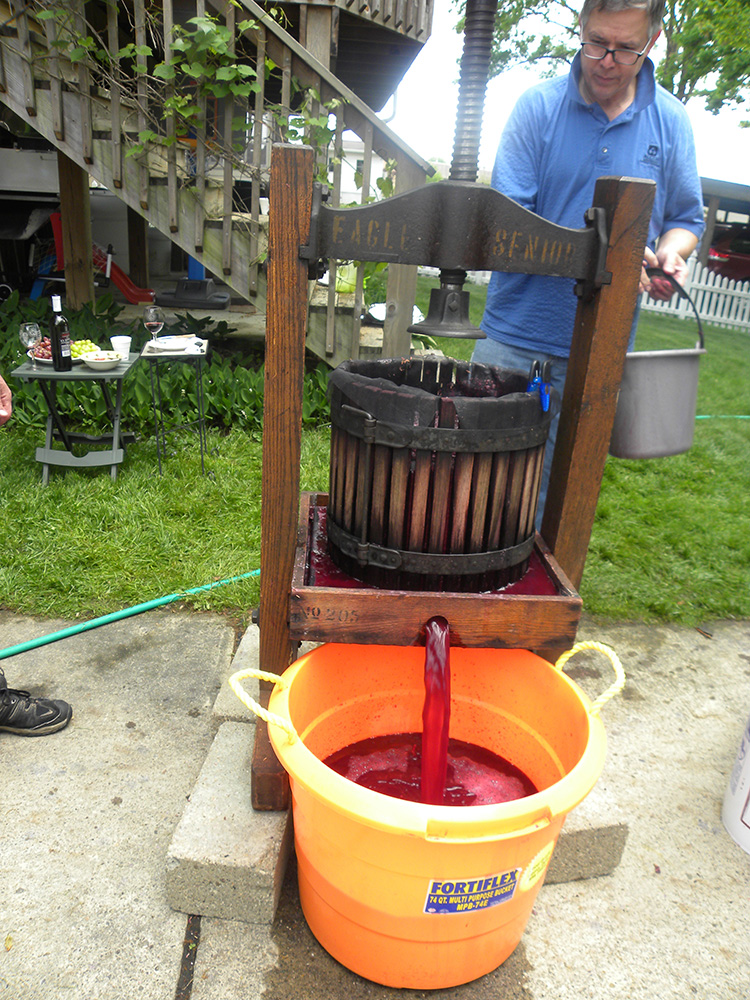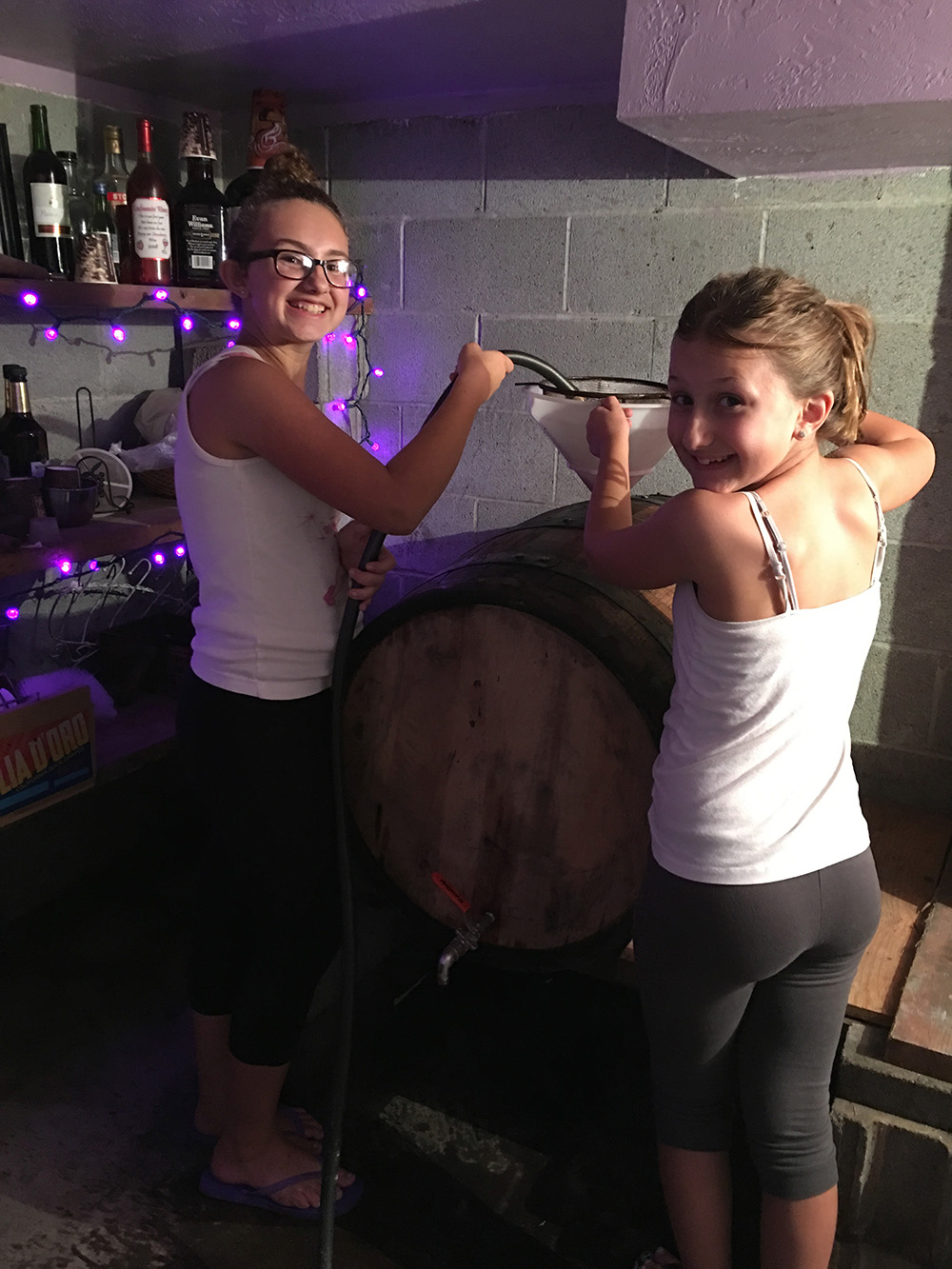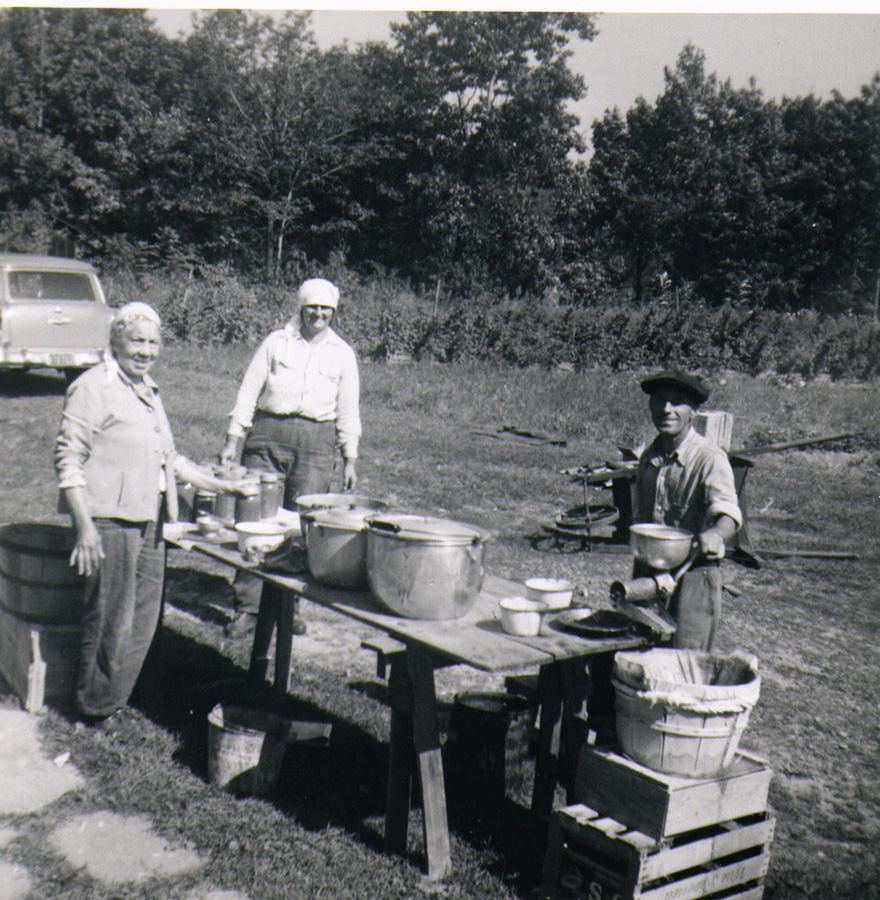
Like all immigrants, Italians brought their traditional methods of food production with them to their new homes in America. From canning garden-grown vegetables and curing meats to home brewing wine and spirits (think limoncello), the first generation harvested and processed their food in the same manner they would in Italy.
Families emigrating from rural towns were accustomed to growing their own crops and modifying those fresh foods to keep for a period of months. Often each generation of the family helped with food production in some way or another, and homemade wine was no exception.
Winemaking is a community affair from its creation to its enjoyment. Here at the History Center, we conduct many oral history interviews with individuals from Western Pennsylvania to preserve the Italian American experience, and winemaking is a topic frequently discussed. Nearly everyone I speak with has a story about wine: loading and unloading boxes of grapes from a vehicle; crushing grapes in the cellar with nonno; betting glasses of wine on a Bocce game. It’s a tradition recalled with fondness, and many families continue to pass down their techniques to the next generation.
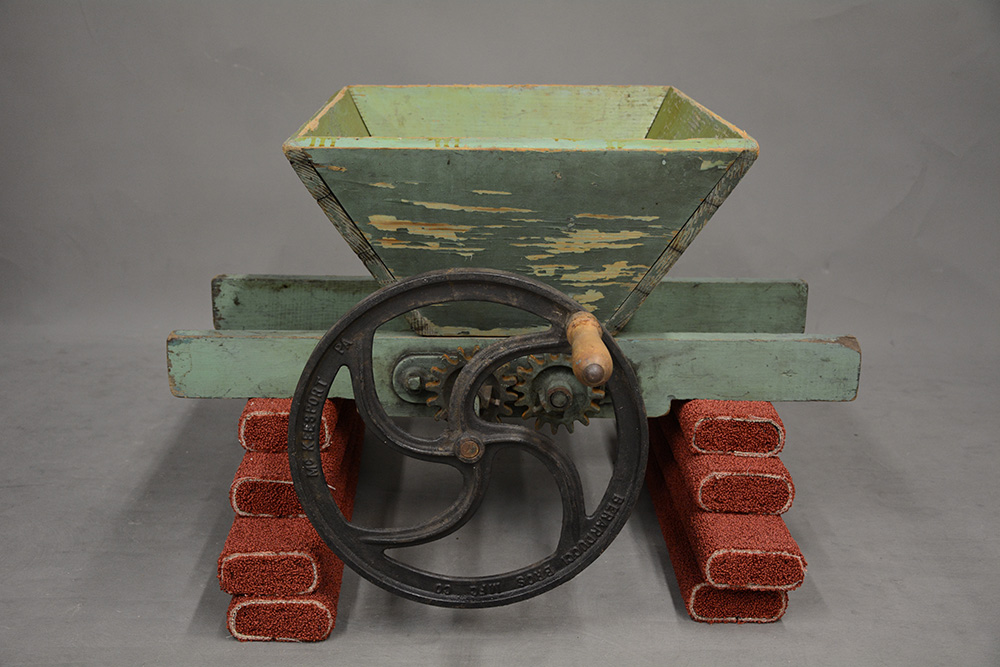
In fact, home winemaking was so prevalent in our region, a local company in McKeesport called Berarducci Bros. produced and sold devices for making wine such as fruit crushers and wine presses (if you visit American Spirits: The Rise and Fall of Prohibition, you will find a Berarducci Bros. wine press on display from the Italian American Collection, as well as a few custom wine bottles from local families). Today, home winemakers can get their grapes and winemaking equipment at CFP Winemakers in the Strip District, mere yards away from where Italian immigrants once picked up their grapes.
In the Northern Hemisphere, wine grapes are harvested when they ripen in late August and September. In October, they ship from Northern California to the eastern part of the United States. The Produce Terminal in the Strip District was the point of arrival for grapes in Pittsburgh, as it was for all wholesale produce, and Italian immigrants would travel from all over Western Pennsylvania to bargain over boxes of grapes.
Bucky Palermo remembers, “The last couple of times [my father] did it, I went down with him. You know the Strip District dock? There’s gotta be twenty guys down there selling grapes and he’d go down the line, ‘How much?’ ‘Two fifty.’ ‘How much?’ ‘Two forty…’ [Laughs] If it was a dime cheaper he’d buy it!”
Nino Barsotti recalled in a conversation, “All the [Barsotti] brothers would get together… and buy a railroad car full of grapes for all the Toscani… They used to go around to all of these Italian families and unload the grapes.”
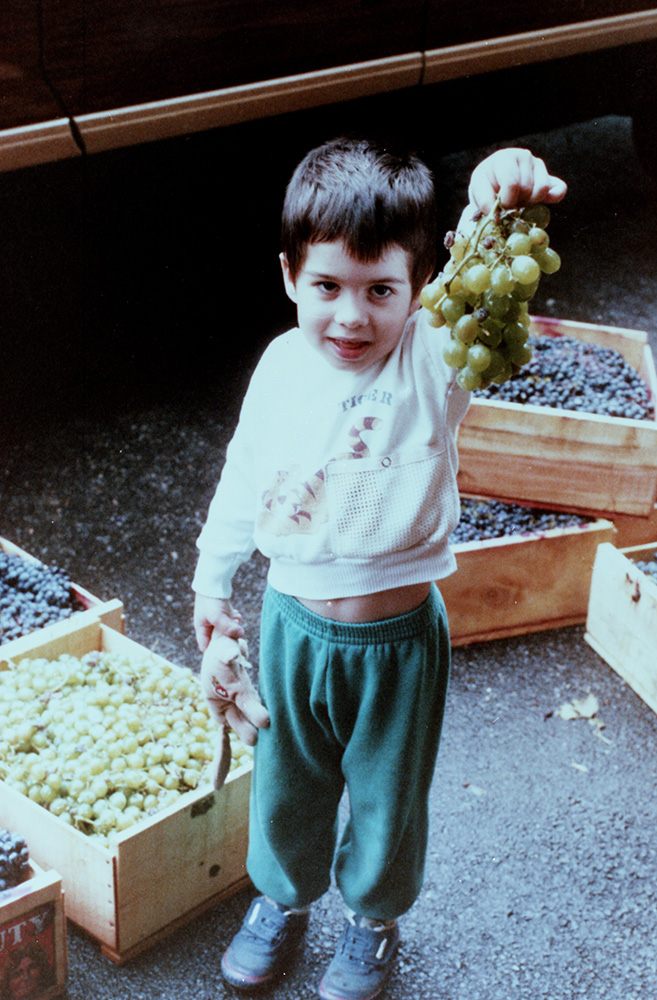
Gift of Peter Argentine, 1995.0380, Detre Library & Archives at the History Center.
Wine is made when grape juice and other additives ferment. From what I’ve been told, the key to drinkable wine is clean equipment, patience, and keeping the liquid undisturbed. Local author and foodways historian Cassandra Vivian writes about her nonno’s wine settling in the basement: “Then on Saint Martin’s Day the storage barrels were sealed and the wine was left to age. It lay in our cellar all winter like a hibernating bear. Every Saturday when I visited my Nonno I would race down the cellar and as I reached out to pat the wine barrel on its side in anticipation Nonno would always say, ‘Piano, piano, softly, softly.’”
Sometimes home winemakers have off years, and other times there is something wrong with their process. Anthony Crisafio’s family moved to a building on Penn Avenue in Lawrenceville when he was a child. He recollected that his father had a few rough years adjusting his winemaking process to their new home: “In front of the house, we used to have big cobblestone streets… Streetcar tracks protruded up the street like this [and] they had big iron street cars, no buses… They’d come down the street and the whole goddamn house would be shaking… For the wine to settle, they need peace… they were shook up constantly. [His wine] never settled. It took two years for my father to discover that.”
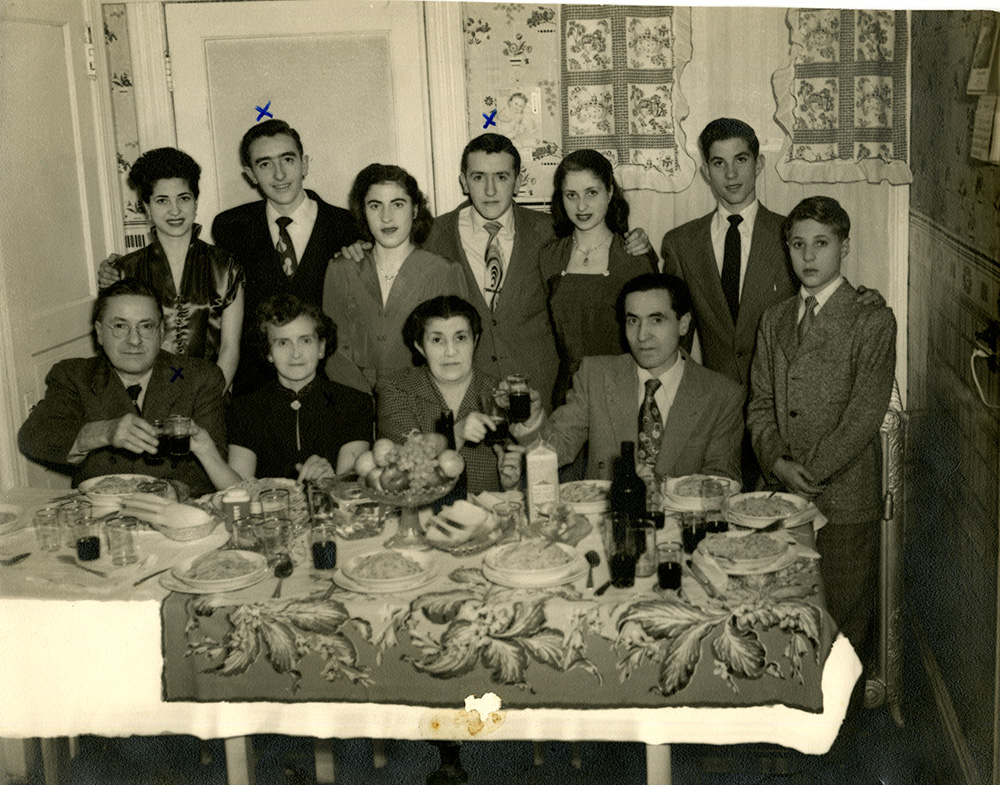
Home winemaking, as well as other craft brewing and distilling, is enjoying a moment in the spotlight thanks to Americans’ newfound appreciation for fermented foods. Wine in general was once foreign to our palettes. (Remember, Thomas Jefferson was in the minority as a daily wine drinker during his era.) At one time in American history, wine was viewed with bias due to its association with Italian immigrants. According to author John F. Mariani in his book How Italian Food Conquered the World, Americans referred to inexpensive red wine as “dago red,” a slang term stemming from an Italian ethnic slur, as early as 1906.
But, oddly enough, the passing of Prohibition didn’t stifle home winemakers, as there was a stipulation that households could brew up to 200 gallons of wine for home and sacramental use. Carmen Vacca remembers, “I remember one time we went down to the Strip District to pick up [grapes] and we unloaded the truck in front of the house and the Dormont police pulled up… he says, ‘What are you doing with all those grapes?’ [My dad] says ‘I make wine.’ He says, ‘You’re not allowed to make wine.’ My dad says, ‘Yes I am. I can make 200 gallons for myself.’ So ever since then [the police] used to stop and take a little drink.”
Much more can be said about the tradition of home winemaking in Pittsburgh and the impact of Prohibition on the American wine industry. Learn more about Prohibition in Western Pa. by exploring our American Spirits blogs.
Melissa E. Marinaro is the director of the Italian American Program at the Heinz History Center.

